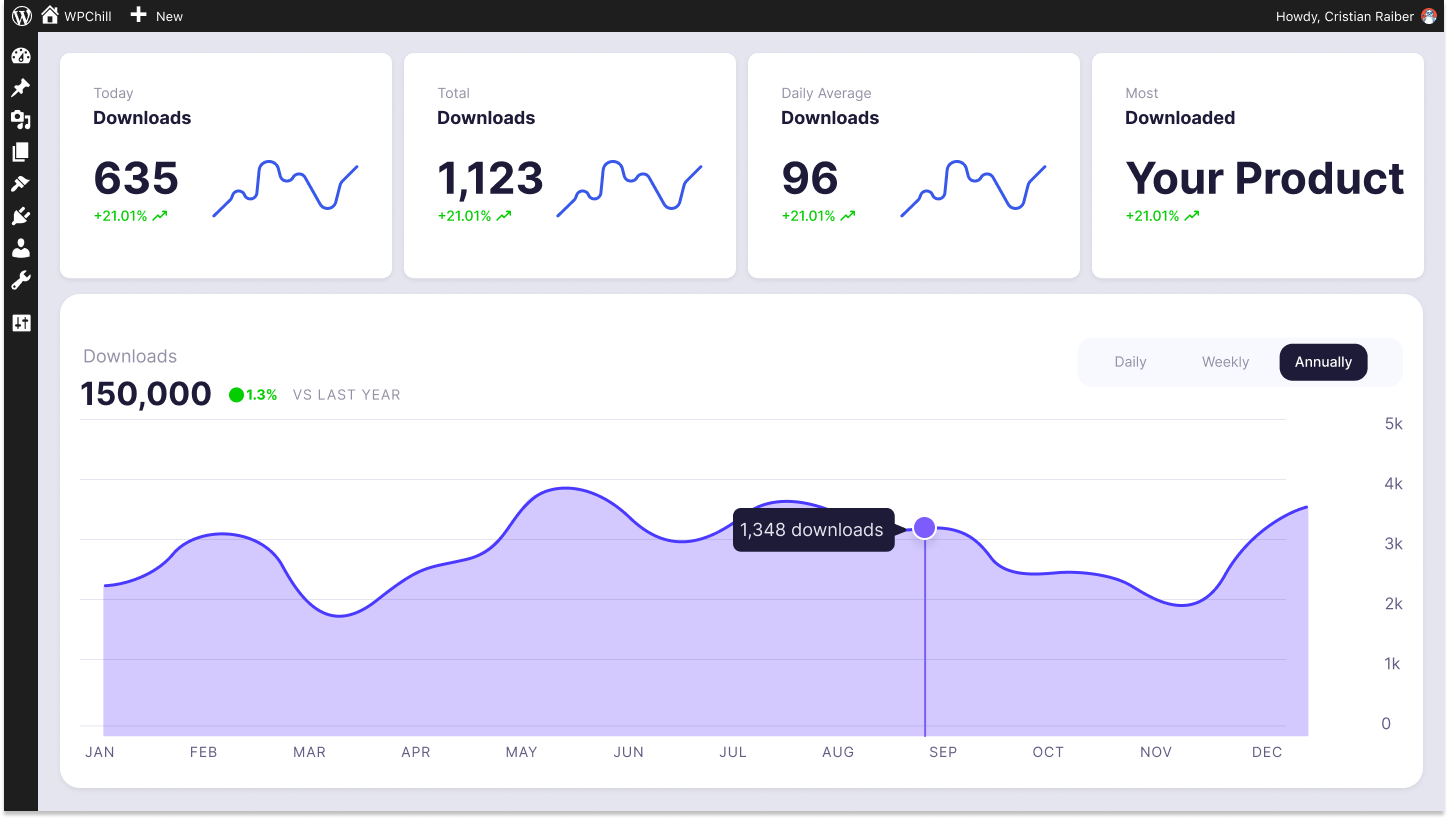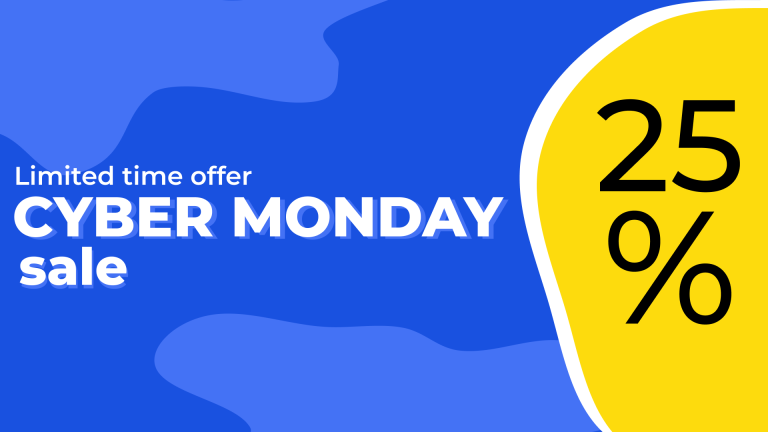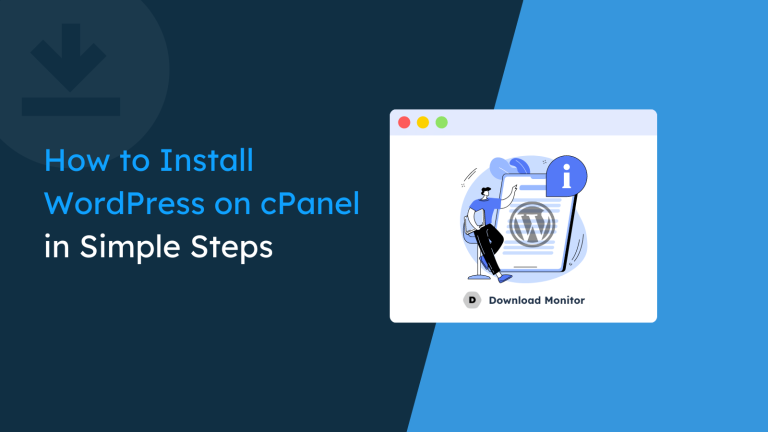Selling software online is a lucrative online business niche, so kudos to you for wanting to dive in. Soon, you’ll join the many developers who’ve turned into successful software entrepreneurs using only their programming skills.
Successfully selling downloadable software online boils down to three things:
- Finding a software idea people will pay for
- Making buying easy
- Offering excellent customer service.
So what exactly do all these entail?
In this guide, you’ll learn how to start selling your software products online, along with some considerations and best practices to help you succeed.
You’ll also discover how to set up your very own WordPress store for selling your software (and why you must!).
First, though, let’s look at how selling software online is different from setting up a SaaS software business.
Table of contents
Selling software online vs. selling a SaaS solution
Generally speaking, setting up a software business means creating a downloadable software that users download to use locally on their systems or applications, or launching a SaaS solution that users access via the cloud.
Of these, creating downloadable software is the best way to break into the software industry, as it’s pretty straightforward to launch. Here, you can write your app on your notepad and put it up for sale on your website. Your users can download it to install on their systems.
You don’t need to build a complex cloud tech ecosystem. All you have to do is periodically release updates so that your software app can stay compatible with your users’ systems — and new features, of course.
Downloadable software products are usually built for a particular platform, such as Mac, Windows, Linux, Android, or iOS, to name a few. Consider a VPN for Mac as an example. Downloadable software is also often built on top of an app — for example, a plugin for WordPress.
If you launch a downloadable software business, you’ll typically charge your users a one-time fee for the initial download and a monthly payment for receiving support, updates, and newer features.
A SaaS business, in contrast, needs you to build a complex — and an often expensive — app infrastructure. You need to ensure that your software works well in the cloud and that all the downloadable apps you offer stay in sync at all times, even if you provide offline access. In this business model, you charge a flat monthly, quarterly, or annual fee.
This guide focuses on downloadable software products.
Now, let’s focus on the three key steps to successfully selling software online.
Step 1: Discover a profitable software idea and validate it
When it comes to selling software online, the first step is discovering product ideas to develop. There are three ways to go about this…
1. Pick a popular solution to build an add-on software for
In this case, choose a popular application and build a software product that adds a piece of needed functionality to it.
Ex-Apple engineer turned indie developer, Rony Fadel, built an email client for Mac for the Zoho solution. This enabled users to access multiple accounts. (Fedel’s product, Mailbox for Zoho, is a good case study, by the way.)
If you scan community forums of your target solutions, you’ll find people complaining about missing features that can be developed into a profitable software add-on.
A downside to this is that a solution might eventually ship what you’re offering, making your product obsolete. (The solution to this is to keep delivering more and more value with your software and offering an experience better than the proprietary tool.)
2. Pick a platform and launch a “mass market” product
Next, pick a platform and build a product that caters to a large user base.
This is like building an email client for Mac. In addition to Apple’s official email client software, you’ll find yourself competing with many established options (like Thunderbird) in this case.
Also, you’ll have to compete with web apps (many of which come with free access) and open-source alternatives. The market is crowded, and so the competition is enormous.
3. Pick a very niche industry
Another way to come up with a software idea is to pick a niche. For example, you might develop software for tarot readers or astrologers.
You could also choose the gaming niche and launch games.
Niche software is often a good option, as it allows you to solve a very specific problem for a select user segment. Both the problem and the target audience are well-defined in this case.
Whatever approach you go for, when you choose a product idea, consider how you could expand your product suite in the future for making upsell and cross-sell revenue.
Once you have an idea for creating your software, it’s time to validate it. Digging through user forums is an effective way to validate ideas for software products. If you have many people ranting about a missing functionality, it’s a go. Niche community groups, too, can offer insights into the demand for an idea. Search volume analysis (discussed in detail here) is yet another way to validate demand.
Step 2: Build your product
Now comes the coding part. You’re already the pro here! Just keep the Minimum Viable Product (MVP) concept in mind when developing your product.
An MVP is a “launchable” version of your software that ships only the must-have features — in your software’s case, it’s delivering the unique function it promises to deliver.
Building an MVP isn’t as time or resource-consuming as coding your entire (planned) software. So, for example, if you want to develop an automatic time tracker software for Windows, first start with only offering automatic time tracking. Features that boost productivity or offer analysis into the time spent or support for APIs can wait.
When selling software online, an MVP helps you bring your product to the market sooner and enables you to gauge the demand for your product, collect feedback (and loop it back to the development), and deliver a better product.
Step 3: Set up your e-commerce store to sell your software product(s)
Many software entrepreneurs look for ways to sell Mac apps outside the App Store. Similarly, Windows software developers want to sell independently, too. They often do so to avoid the hefty commissions these marketplaces charge and the lack of control over their product’s release cadence. For these same reasons, selling on digital marketplaces like Amazon, too, makes no sense.
Building your own software store for selling your software online is the best option. If you sell your software on your website, you:
- Don’t have to pay any commission on your sales to the app stores
- Can experiment with pricing as you please
- Get to establish yourself as a brand from the start and build your own user base (and you can maintain your own CRM)
- Can engage with your customers directly
- Get total control over your product release schedule; you don’t have to wait for weeks to get your updates published
- Can sell software products for multiple platforms using the same storefront
Using WordPress and Download Monitor to set up your software store
The easiest way to set up your website for selling software online is by using WordPress and a plugin that allows you to sell and distribute software.
One such plugin is Download Monitor, which is specifically designed to simplify the sale of software products. With Download Monitor, you can start selling your software products online in just three easy steps. (We’ve described the process in detail here.) In brief, once you activate Download Monitor, you get a Shop tab added to your website.

Adding a new product is easy with handy settings for uploading the downloadable and setting the pricing:

Plus, you get detailed insights into your downloads:

For more information about creating your store, check out this article.
Download Monitor also makes enabling payments, maintaining version history, and access control effortless. By streamlining your entire sales process, it does all the heavy lifting for you when it comes to selling software online.
Because software can be easily pirated and redistributed without your authorization, you might want to implement some form of verification to ensure fair access. Download Monitor, for instance, captures users’ IP addresses. If necessary, you can even limit the number of installations.
Investing in user experience
Another aspect to successfully selling software online is offering a good user experience.
Start by creating high-quality installation resources. Installing downloadable software is quite an exercise, more so when it’s purchased from an independent seller. First-time users can find it even more difficult.
So to ensure that users can install your software, write easy-to-follow installation and starter guides. Also, write support docs explaining the different functionalities of your app and how to use them.
Set aside time for offering maintenance and support. Most downloadable software products need routine updates to stay compatible with the users’ systems or applications. Maintain a release calendar accordingly.
Also, work on bug fixes that get reported. Your customer support quality has a direct bearing on your user retention. Also, follow up with your customers and request feedback — this can guide your product development.
Prioritize product development as well. Keep adding new features to your software so that your users see the value in their subscription.
Marketing your software business
Your product’s landing page (and, by extension, your store website) is your single biggest marketing asset for selling software online. It works as the linchpin of your marketing strategy.
Ideally, you need a landing page that includes:
- An explanation of what your product does — the unique value proposition
- Features (and benefits)
- Pricing
- An overview of the installation steps
- The platforms that the software’s compatible with, along with other technical specifications
And naturally, a download/buy button!
Also, include a release log so that users can see that you’re invested in the solution and that it’s actively maintained. Users often don’t prefer buying from independent software sellers if they think the project might get abandoned.
In addition to using elements that boost conversion rates, your landing page must also use the right SEO keywords. This will generate organic leads consistently. If you Google “astrology software for Mac,” for example, you’ll see several organic results that aren’t from the official web store. On-page SEO can get you similar exposure, subject to the competition in your niche.
Content marketing and writing SEO blog posts on topics relevant to your audience also help with such organic lead generation.
Engage yourself as your product’s marketer and promote your product on software review websites, reach out to software bloggers, and engage with your target user groups on social media platforms and forums. All these can boost your software sales.
Try free trials, too:
Offering a free trial is another great way to entice potential customers into using your software and demonstrate how it works. Users are more inclined to click on the “Buy” button after they have experienced the product.
Make sure to review metrics like your traffic (both organic and referral), conversions, the length of your typical sales cycle, and others that sales teams of software companies or general salespersons religiously measure.
Wrapping up…
There are many ways to start selling software online, but choosing the right one for your business is essential.
Selling your software through your own website (instead of using a platform’s marketplaces) gives you higher profit margins and complete control over your product’s pricing and release/update schedule. Plus, you build your own customer base that you can use to grow your business. On top of everything else, you can launch versions of your app for all the popular platforms and make all of them available right on your website.
Thankfully, you now know exactly how to build a store for your software venture with this guide on selling software online.
The process of selling software online becomes considerably easier with Download Monitor, given how it makes payment management, access control, and product delivery hassle-free.
With its many extensions, Download Monitor helps you deliver an even more premium software buying experience for your users. From creating beautiful download pages that offer a better checkout experience to catchy download buttons, the complete pricing plan has you covered. Check it out!

Download Monitor
Grow your audience, track download performance, and convert your traffic into email subscribers with an easy-to-use digital downloads solution for WordPress.




